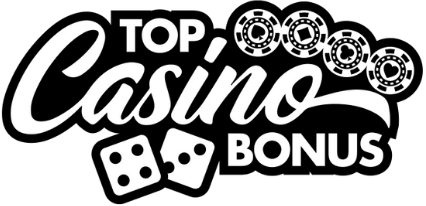Game theory basics for poker players
Let’s get one thing straight, if you’re playing poker without a solid grasp of game theory concepts, you’re flying blind in a storm. It’s like trying to fix a transmission with a butter knife. Game theory isn’t just an academic buzzword, it’s the blueprint for strategic thinking at the poker table. And if you don’t learn to build on its principles, you’re just burning money every time you sit down to play. Let’s roll up our sleeves and dig deep.
Table of contents
What game theory really means in poker
At its core, game theory is about decision-making in competitive environments. In poker, that environment is volatile, with incomplete information, deceptive actions, and tons of subtlety. Game theory lets you chart a course through the chaos, guiding your every bet, fold, and raise with mathematical precision rooted in equilibrium principles.
You’re not playing the cards, you’re playing the opponent
The biggest misconception I see? Players thinking they’re battling hand strength. That’s nonsense. You’re playing your opponents, their ranges, their tendencies, and their likely counterplays. Game theory optimal (GTO) strategy is about making your own strategy so airtight that nothing they can do can exploit you.
It’s not about outsmarting, it’s about balance
Showboaters think poker is about tricky bluffing and fancy plays. Real students of the game understand it’s about balance, using a mixed strategy to be unpredictable. Too much value betting and you’re open to folds. Too much bluffing and competent players pick you apart. GTO leans on frequencies, not guesswork.
Understanding key concepts: the fundamentals that anchor strategy
There are a few cornerstone ideas in game theory that every serious poker player needs etched into their brain. If you skip these, you’re building a house on sand.
Nash equilibrium and unexploitable play
Nash equilibrium is like a treaty between players, nobody can improve their outcome by changing strategy alone. In heads-up poker, solving for this point gives you the GTO approach. But don’t be fooled; GTO isn’t the most profitable strategy, just the safest baseline. Knowing when to deviate is where true profit lies.
Expected value (EV) as your north star
You’ve gotta stop thinking in terms of “winning this hand” and start thinking in expected value. Every action at the poker table has an EV attached. If you’re not sure what I mean, here’s a guide I recommend: understanding expected value (EV) in gambling decisions. You need to hammer this into your process.
Mixed strategies and randomized play
Linear strategies, always bluffing a missed flush or always value-betting top pair, are a one-way ticket to the cashier’s line. Real game theory involves applying mixed strategies: you might bluff that missed draw 35% of the time. Randomizing your play removes predictability, makes you unreadable, and forces your opponents into costly mistakes.
Why exploitative play and GTO should coexist
Here’s the catch: GTO is invulnerable, not always optimal. Exploitative play is where the real edge lies, if you know how to spot the cracks.
Know when to veer off the GTO path
If a guy folds to river bets 80% of the time, you bet every river, forget balance. But here’s the art: you return to balance before he adjusts. Think of GTO as home base. You get to exploitative towns and make your money, but you better know the way back before they catch on.
Use population tendencies to your advantage
In online environments, whether on Betsafe or something like BetMGM, understanding the average player’s common mistakes pays dividends. Whether it’s over-folding to 3-bets or under-bluffing rivers, those leaks are gold mines for observant players.
Practical game theory tools every player should use
You don’t need to “solve” poker, but in this era, you better have some tools in the belt. Relying on gut alone is like bringing a fork to a gunfight.
Solver work is the new schoolhouse
Solvers like PioSOLVER and GTO+ simulate perfect play in countless spots. I use them not to memorize strategy, but to understand the why. I’ll run hand histories, tweak inputs, and study the frequency patterns. It’s like working over steel until the craft becomes instinct.
Database review reveals the truth
Looking at your winrates filtered by action, say, cold-calling three-bets or c-betting out of position, shows what you’re truly made of. Trend errors, plug leakages, this is where most of my real coaching happens. Numbers don’t lie; they just wait for you to stop fibbing to yourself.
Common rookie game theory missteps
Let me save you from a few landmines that wind up sinking the ships of most players trying to go “GTO.”
Trying to play pure GTO without context
If you’re grinding low- to mid-stakes tables at Bet365 Casino, 99% of opponents aren’t remotely balanced. Pure GTO play means leaving money on the table versus these players. GTO is a starting point, not the GPS for every hand played.
Ignoring opponent psychology and tendencies
No solver’s ever tilted. No software’s ever steamed after a cooler. Humans are messier, and that’s our edge. Watch betting timing, hand reveals, chip handling (live), avatar history (online). Get a feel for the rhythm beneath the surface. That tells you far more than solver charts.
Integrating GTO into live and online environments
GTO isn’t something you cram before a game. It’s a framework you internalize over time, like muscle memory for a craftsman. Applied correctly, it underpins every move you make, chipset to chipstack.
Adjusting to platform tendencies
Different platforms foster different habits. On Bally Casino, you might see more recreational players limping ranges. Meanwhile, on BetMGM the pool may lean tighter with stronger aggression. Tailor your play for each venue while using GTO as an anchoring compass.
Live play demands nuance
Live games afford more data, physical ticks, betting tells, speech play. GTO remains the lodestar, but the art of poker shines brightest in reading the fine print players don’t even know they’re revealing. That’s the stuff solvers can’t teach you, but experience will.
Final thoughts: game theory is the skeleton, heart, and soul of poker strategy
Think of GTO not as a cage but as scaffolding. It gives structure to your strategy, even when you’re riffing blues at the table. Master its insides, don’t just mimic output. Use it to understand balance, pressure points, and counterplay. Poker, after all, is the most complex form of human chess, and game theory is the torch that lights the maze.





0 Comments